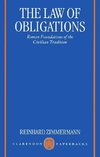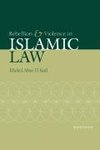
-
 Anglický jazyk
Anglický jazyk
A Case Control Study of Non-Domestic Solved and Un-Solved Homicides in Trinidad and Tobago
Autor: Andre Norton
Master's Thesis from the year 2015 in the subject Law - Criminal process, Criminology, Law Enforcement, University of Cambridge (Wolfson College), course: MSt. Applied Criminolgy and Police Management, language: English, abstract: A case-control research... Viac o knihe
Na objednávku, dodanie 2-4 týždne
44.37 €
bežná cena: 49.30 €
O knihe
Master's Thesis from the year 2015 in the subject Law - Criminal process, Criminology, Law Enforcement, University of Cambridge (Wolfson College), course: MSt. Applied Criminolgy and Police Management, language: English, abstract: A case-control research design was used in this study with the aim of identifying the factors which differentiate solved and unsolved non-domestic homicides in Trinidad and Tobago for the seven year period 2008-2014. Two research questions guided the study:
1) Is the use of elements of a structured approach to investigate homicides associated with more solved cases?
2) Are certain characteristics of homicide cases associated with a higher likelihood of detection?
The data set for this study comprised all the non-domestic homicides reported to the Trinidad and Tobago Police Service from January 1st 2008 to December 31st 2014 was analyzed against 21 investigative variables and 16 solvability factors. Of these, only 2 investigative variables and 9 solvability factors were found to be strongly associated with solved cases. The two investigative variables were (a) 1st officer secured crime scene; and (b) investigator present at post-mortem. This study confirmed previous research findings in identifying the following variables as solvability factors (a) weapon recovered; (b) suspect named, (c) projectile recovered, (d) offender vehicle identified, (e) fingerprint found, (f) eye-witness (1vs. 0), (g) ballistic on weapon found, (h) 3 investigators versus 1, and (i) 4 investigators versus 1. The magnitude of these effects, measured with an odds-ratio meta-analysis suggested that the presence of these variables is positively associated with solved cases.
A model with three latent classes was found to best describe both the investigative variable and solvability factor variables. Based on the variation in the observed distribution, specifically the ratio of solved to unsolved cases, the classes were given the labels "Easy Cases", "Normal Cases" and "Difficult Cases". A similar variation was not observed in the detection status for the investigative variables - the proportions of solved to unsolved for each class were equally 50%. Consequently those results were discarded as they provided no useful insight into the homicide cases.
- Vydavateľstvo: GRIN Verlag
- Rok vydania: 2016
- Formát: Paperback
- Rozmer: 210 x 148 mm
- Jazyk: Anglický jazyk
- ISBN: 9783668199491



 Nemecký jazyk
Nemecký jazyk 







